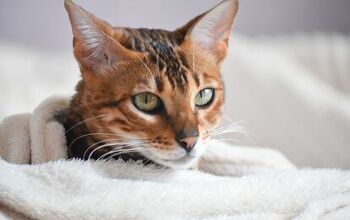Silky Terrier


About Silky Terrier
Known as the Sydney Silky and Australian Silky Terrier, the Silky Terrier is an energetic, lively, entertaining and confident companion dog. Looking much like Yorkshire Terriers, this breed is a great family dog. But is it the right dog for you? The Silky Terrier can also be temperamental and you have to have the time to devote to this little dog.
An indoor dog, the Silky Terrier is great for someone who lives in the city or likes to spend time inside. Dependable and loyal, you’ll find that this pooch is a wonderful companion, watchdog, and friend. Read on to see if the Silky Terrier is a fit for your family.
The Silky Terrier is an energetic, lively, entertaining and confident companion dog.
Making its start in Australia during the late 1800s, the Silky Terriers were used for small vermin hunting and companionship. Closely related to the Australian Terrier and the Yorkshire Terrier, this breed is called the Silky Terrier in North America, but in its country of origin and the rest of the world, it is called the Australian Silky Terrier.
The Silky Terrier is the result of cross breeding Yorkshire Terriers with Australian Terrier in an attempt to improve coat color.
The Silky Terrier was recognized by the AKC in 1959.
The Silky Terrier does well on either a home cooked diet or on high-quality dog kibble. You can supplement your Silky Terrier’s diet with other nutrients and vitamins.
Dependable and loyal, you’ll find that this pooch is a wonderful companion, watchdog, and friend.
Smart, highly trainable dogs, socialization and obedience training with a Silky Terrier should start at a young age. If not, this breed can become aggressive and territorial. For the best response, you’ll need to be use positive training methods where you are patient, loving and uses praise, treats and toys as a reward. These training sessions should be kept short, interesting, and fun so the Silky Terrier does not become bored. It’s a good idea to break down your Silky Terrier’s training into three or four distinct sections per day, such as general obedience, housebreaking, proper behavior toward humans and tricks.
An early start on training is a good idea simply because Silky Terriers tend to become more set in its ways as time goes on. The dog’s natural stubbornness will be become apparent if this happens and changing any problematic behaviors at this time will be difficult.
Both male and female Silky Terriers weigh 8 to 11 pounds.
There are a lot of traits that describe the Silky Terrier: alert, courageous, extremely intelligent, sociable, and affectionate. You’ll notice that it is loving and wants to be around you all the time. Curious and full of energy, the Silky Terrier is known to be willful at times. Like most terriers, this breed likes to chase, bark and dig. The Silky Terrier is a loyal family dog, so it needs a lot of attention from its people. The Silky Terrier loves being indoors, involved in its family’s daily life, curled up on a comfortable lap, and is always ready to play. This dog is ready to go for a walk, play or travel any time.
Self-assured, friendly and spirited, Silky Terriers are independent but can be possessive of its territory. These strong-willed dogs learn quickly, so be sure to start socialization and training early in order to keep your Silky Terrier well behaved, confident and non-aggressive. Silky Terriers get along well with children, but because of its tiny size, children need to understand know how to treat and handle them. Although this dog shouldn’t be trusted around animals smaller than itself, the Silky Terrier gets along well with other family dogs.
The Silky Terrier is a healthy breed of dog, but there are a few concerns you should be aware of. These include epilepsy, intervertebral disc disease, genetic eye disease, diabetes mellitus, Legg-Calve-Perthes disease, and elbow dysplasia.
Silky Terriers have a life expectancy of 14 to 16 years.
Silky Terriers are full of energy, have plenty of stamina and love going on daily walks or runs. This breed has a hunting background, so Silky Terriers like to chase small animals. Along with daily walks, your dog will enjoy time spent in an outside fenced yard or a trip to the dog park. If you can’t get outside, an energetic game of fetch, tug-of-war, or chase indoors will keep your dog exercised and active.
There are a lot of traits that describe the Silky Terrier: alert, courageous, extremely intelligent, sociable, and affectionate.
The American Kennel Club says this about the breed: “Although a toy in size, the Silky Terrier has a true terrier personality – he is of sufficient substance to be able to hunt and kill domestic rodents. The general public occasionally confuses this breed with the Yorkie, but in reality, the Silky is larger and more closely related to the Australian Terrier. A friendly, joyful temperament and the lovely blue and tan coat make him an ideal companion.”
One of its distinguishing features, the Silky Terrier boasts a magnificent fine, flat, single coat. It is sleek, glossy, and five to six inches long, parting down the back but it shouldn’t reach the floor. The topknot, which keeps the hair out of a Silky Terriers eyes, is lighter in color. All Silky Terrier puppies are born black, but as they become adults, this changes to blue with tan markings or red and blue.
A low to non-shedding dog, the Silky Terrier’s coat is high maintenance. It requires about 15 to 30 minutes of brushing to keep its coat in top condition, as it is prone to mats and tangles.
As puppies, Silky Terriers are energetic and will burn calories very easily, so you should feed your pup about four times a day. This allows the puppy to get all the necessary nutrition they need.
Photo credit: Utekhina Anna/Shutterstock, Capture Light/Shutterstock

Amy Tokic, Editor of PetGuide.com, is a passionate animal lover and proud pet parent of Oscar, a Shih Tzu/Chihuahua cross, and Zed, a Japanese Chin. Her love of animals began in kindergarten, when she brought her stuffed dog Snoopy into class with her every day. Now, she writes about her adventures in pet ownership and tirelessly researches products, news and health related issues she can share with other animal enthusiasts. In her free time, Amy loves perusing used book and record stores, obsessing over the latest pet products available and chasing squirrels with wild abandon (a habit attributed to spending too much time with her pooches).
More by Amy Tokic

























